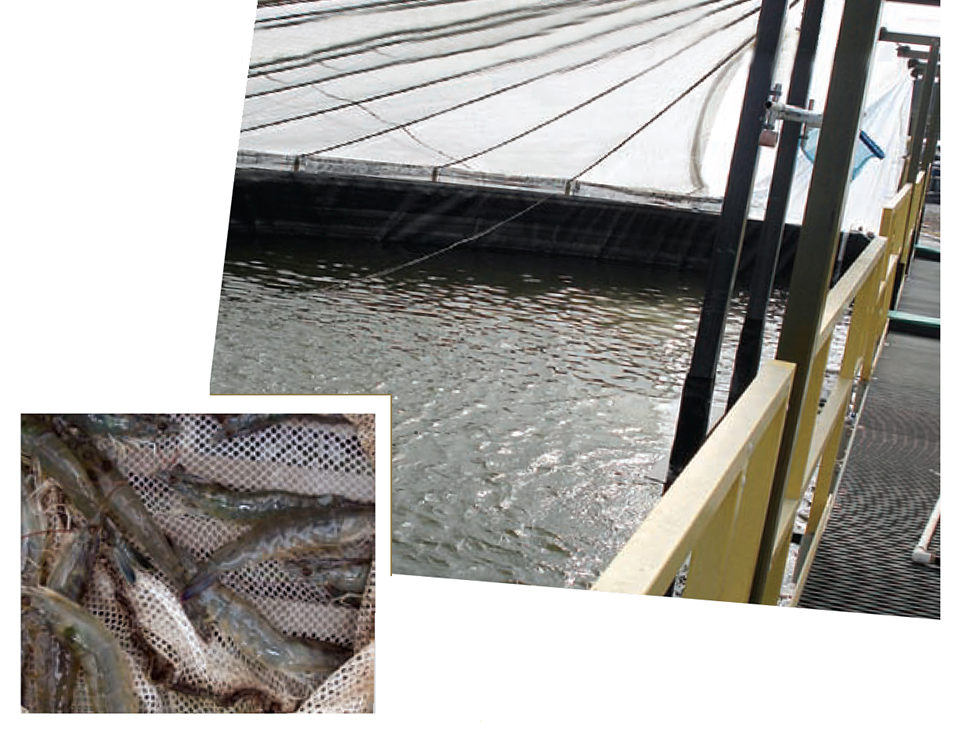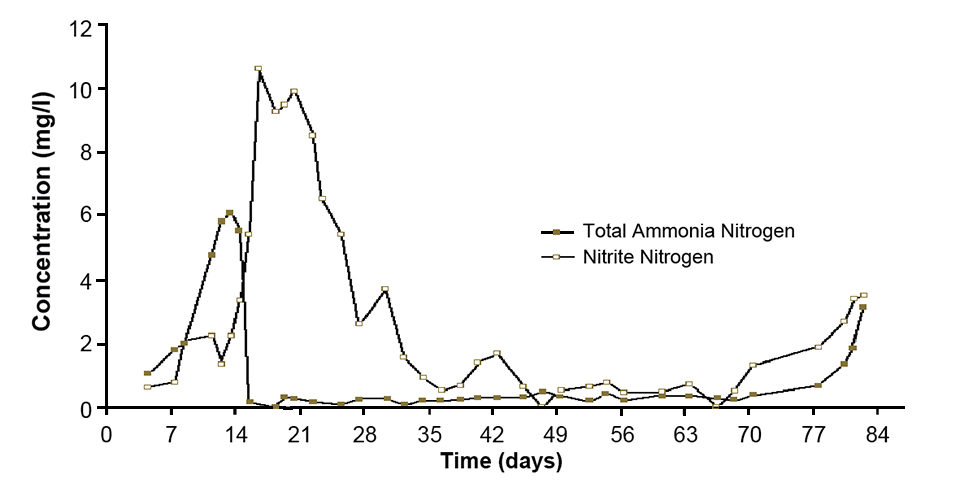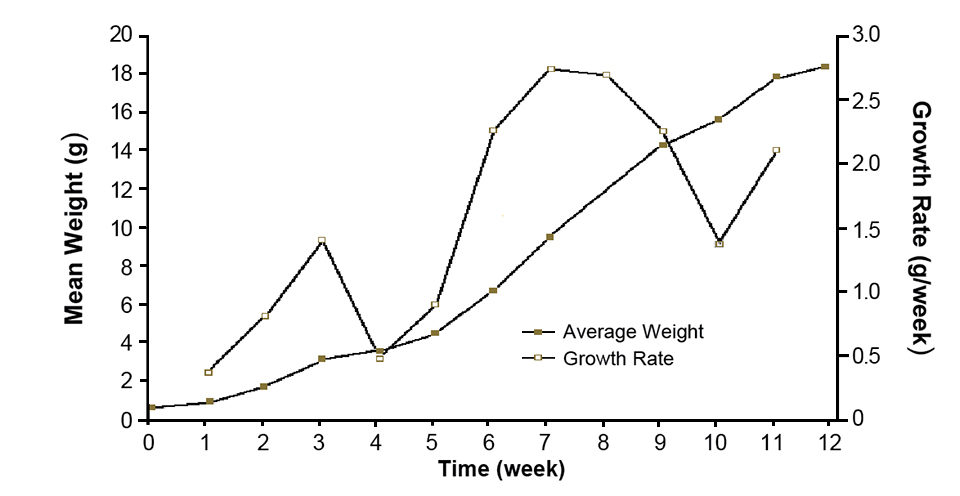Oceanic Institute develops biosecure RAS for superintensive production

Commercial shrimp producers worldwide continue to face critical challenges related to disease and negative environmental impacts. These challenges have prompted farmers and researchers to develop alternative production strategies, including biosecure, recirculating aquaculture systems (RAS).
Significant progress has been achieved in system design and management, improved shrimp performance through selective breeding, and understanding of the complex microbial community to mitigate water quality problems. However, production costs need to be reduced if this technology is to be profitable and embraced by the commercial sector.
Commercial-scale demonstration
Researchers at Oceanic Institute in Waimanalo, Hawaii, USA, have developed a biosecure RAS for the superintensive production of Pacific white shrimp (Penaeus vannamei). Although encouraging results have been achieved in research-sized units of 75 square meters or less, uncertainty remained regarding potential scale-up issues.
In 2006, Oceanic Institute researchers modified a 337-square-meter outdoor pond into a bio-secure RAS for a commercial-scale demonstration trial. In early 2007, the RAS was stocked with 279,131 juvenile shrimp from the institute’s specific pathogen-free growth line. The stocking density was 828 shrimp per square meter, the highest ever attempted at the facility. Mean water depth throughout the trial was 1.6 meters.
Water quality management
Management of ammonia and nitrite was accomplished by promoting the growth of nitrifying bacteria on particles suspended in the water column. In addition, abundant photo-autotrophs and heterotrophs contributed to the removal of these inorganic nitrogenous metabolites.
Classic ammonia and nitrite acclimation spikes were observed during the early part of the trial, when ammonia reached a maximum concentration of 6.0 miligram per liter, followed by a rapid increase in nitrite concentration to 10.6 miligram per liter (Fig. 1). Ammonia and nitrite concentrations decreased rapidly as the microbial community became more established.

After the fourth week, ammonia and nitrite concentrations stabilized and were low throughout the remainder of the trial. Mean temperature, pH, and dissolved-oxygen concentration were 29.2 degrees-C (25.4 to 32.7 degrees-C), 6.9 (6.1 to 8.6), and 6.1 miligram per liter (1.5 to 11.5 miligram per liter), respectively. On average, only 2.1 percent of the total water volume was exchanged daily, and only 402 liters of water were used to produce 1 kg of shrimp.
Shrimp performance
Shrimp growth rate was variable throughout the trial (Fig. 2). Mean growth for the first five weeks was 0.8 gram per week. This low growth likely resulted from the small 0.5-gram shrimp size at stocking and high nitrite concentrations during this portion of the trial. Once nitrite levels stabilized, shrimp exhibited mean growth of 2.2 grams per week over the next six weeks. Overall growth was 1.5 gram per week, while the feed-conversion ratio was about 1.6. Production was 10.3 kilogram per square meter, the highest ever achieved at Oceanic Institute on a square meter basis.

This, the first commercial-scale, superintensive grow-out trial conducted at Oceanic Institute, demonstrated there were no significant scale-up issues which negatively impacted shrimp performance or system management. With regard to product quality, physical damage and scarring of the shrimp were not observed at harvest, despite harvesting the shrimp at a density of 562 shrimp per square meter. After harvest, 3,462 kg of shrimp were iced and sold fresh to local distributors or donated to local charities.
Economic analysis
The estimated production cost of shrimp from a hypothetical farm using production strategies and results from this trial was U.S. $3.66 per kilogram. This represented a dramatic decrease in production cost compared to previous trials at Oceanic Institute (Table 1, Dr. Terrill Hanson, Mississippi State University). Importantly, opportunities exist to further reduce these costs through selective breeding, improved feed formulations and feed management strategies, and automation technologies.
Otoshi,Shrimp performance and production costs, Table 1
| Texas Farms 2001-2002a | O.I. Trial #1 2006b | O.I. Trial #2 2006c | O.I. Trial #3 2007d | |
|---|---|---|---|---|
| Stocking density (shrimp/m2) | 50 | 301 | 401 | 828 |
| Survival (%) | 50.0 | 89.5 | 90.6 | 67.9 |
| Harvest weight (g) | 18.0 | 21.0 | 21.0 | 18.3 |
| Growth rate (g/week) | 1.00 | 1.44 | 1.49 | 1.50 |
| Production (kg/m2) | 0.45 | 5.7 | 7.6 | 10.3 |
| Water use (l/kg shrimp) | – | 187 | 172 | 402 |
| Cost (U.S. $/kg) | 6.71 | 5.83 | 4.84 | 3.66 |
(Editor’s Note: This article was originally published in the November/December 2007 print edition of the Global Aquaculture Advocate.)
Now that you've finished reading the article ...
… we hope you’ll consider supporting our mission to document the evolution of the global aquaculture industry and share our vast network of contributors’ expansive knowledge every week.
By becoming a Global Seafood Alliance member, you’re ensuring that all of the pre-competitive work we do through member benefits, resources and events can continue. Individual membership costs just $50 a year. GSA individual and corporate members receive complimentary access to a series of GOAL virtual events beginning in April. Join now.
Not a GSA member? Join us.
Authors
-
Clete A. Otoshi
Oceanic Institute
41-202 Kalanianaole Highway
Waimanalo, Hawaii 96795 USA[103,114,111,46,101,116,117,116,105,116,115,110,105,99,105,110,97,101,99,111,64,105,104,115,111,116,111,99]
-
Scott S. Naguwa
Oceanic Institute
41-202 Kalanianaole Highway
Waimanalo, Hawaii 96795 USA -
Frank C. Falesch
Oceanic Institute
41-202 Kalanianaole Highway
Waimanalo, Hawaii 96795 USA -
Shaun M. Moss, Ph.D.
Oceanic Institute
41-202 Kalanianaole Highway
Waimanalo, Hawaii 96795 USA
Tagged With
Related Posts

Health & Welfare
A case for better shrimp nutrition
Shrimp farm performance can often be below realistic production standards. Use proven nutrition, feeds and feeding techniques to improve profitability.

Health & Welfare
A holistic management approach to EMS
Early Mortality Syndrome has devastated farmed shrimp in Asia and Latin America. With better understanding of the pathogen and the development and improvement of novel strategies, shrimp farmers are now able to better manage the disease.

Aquafeeds
A look at India’s fish feed industry
India's fish-farming industry makes limited use of modern feeds, providing potential for the feed sector to grow. Commercial feeds are predominantly used for pangasius farming, followed by a rising popularity in carp culture.

Health & Welfare
A look at aquaculture in Guyana
With its large quantities of water and little industry to pollute it, Guyana has the potential to become a greater player in global aquaculture.


